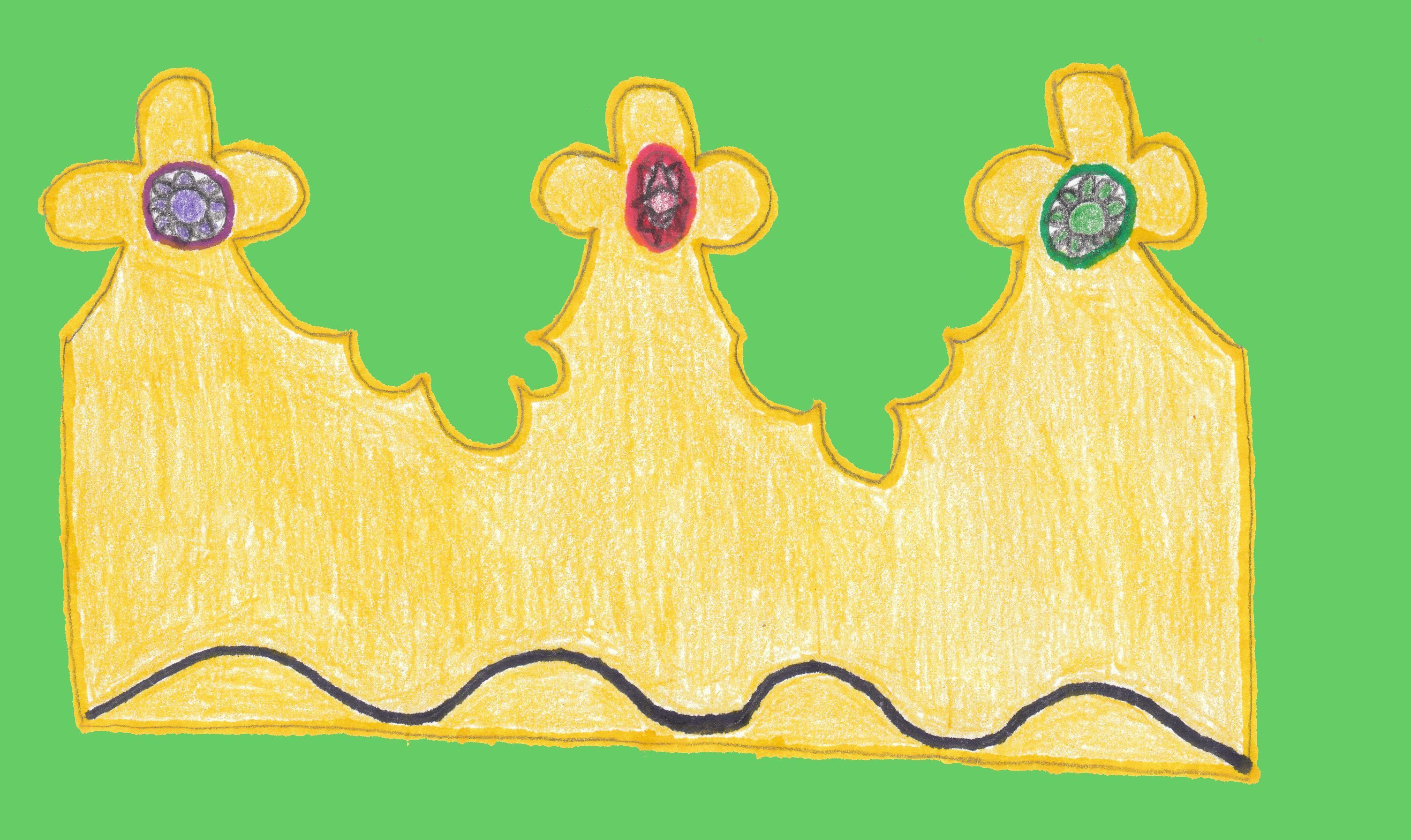 How to Play Kings in the Corner
How to Play Kings in the Corner 
Kings in the Corner is a fun multi player game that resembles solitare in many ways. During the course of the game, players attempt to deplete their hands by playing their cards to a tableau in
the center of the table. The name of this game is sometimes shortened to just Kings Corner or Kings Corners.
Kings in the Corner can be played by from two to six players. The game uses the standard 52 card pack with the cards ranking as follows, from highest to lowest: King, Queen, Jack, 10, 9, 8, 7, 6,
5, 4, 3, 2, Ace.
The first order of business in this game is to determine which player will be the first dealer. The choice of this first dealer can be accomplished in one of several ways, with cutting for high
card a commonly used method.
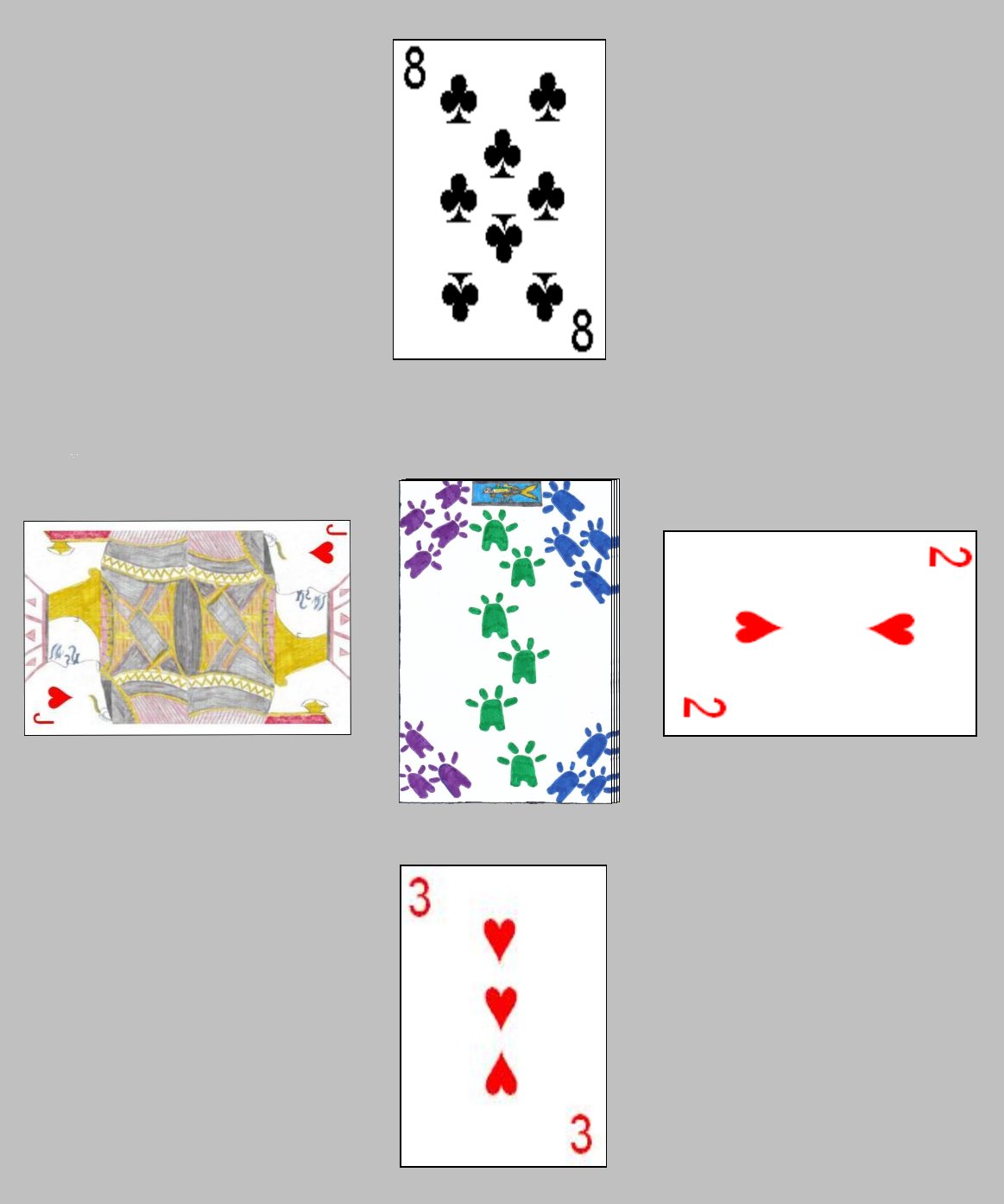 Once the dealer is
selected, he deals the cards face down one at a time clockwise around the table until each player has seven cards. The player to the dealers immediate left receives the first card in the deal.
After each hand the deal rotates around the table in the same clockwise direction.
Once the dealer is
selected, he deals the cards face down one at a time clockwise around the table until each player has seven cards. The player to the dealers immediate left receives the first card in the deal.
After each hand the deal rotates around the table in the same clockwise direction.
The dealer then creates a layout on the center of the table to begin the game, called the tableau. He places the draw pile face down in the center of the table. He then removes four cards from
the stock pile and lays them face up around the stock pile to begin foundation piles. He places one at each side of the draw pile, at the four points of the compass, North, South, East and West.
The diagram to the left shows an example of this initial layout. Obviously the identity of the specific cards dealt to the tableau would be different but the layout format should be the
same.
After the layout is created, the player to the immediate left of the dealer plays first. To begin his turn a player first must draw a card from the center stock pile. After drawing he may make
any of the following legal moves:
- If his hand contains any Kings he may immediately play them. Kings are played in the corners (angled between the four original foundation piles. These Kings start new foundations in the
corners in which players can play cards to.
- If he has any card that is lower in rank than a card currently at the top of any of the foundation piles on the table, and the card is of the alternate color, he may play this card to the
appropriate foundation pile. Thus, the foundation pile will be built in a downward ranking, alternating red and black cards. For instance, a red 9 can be played on any black 10.
- If, on the table, the bottom most card of any foundation pile is next down in rank from the top card of another foundation pile, he may move the entire pile to make one long descending,
color alternating sequence.
- If, by making the above move, any of the four original foundation piles is empty (has no cards currently on it) the player may play any card of his choice in the spot.
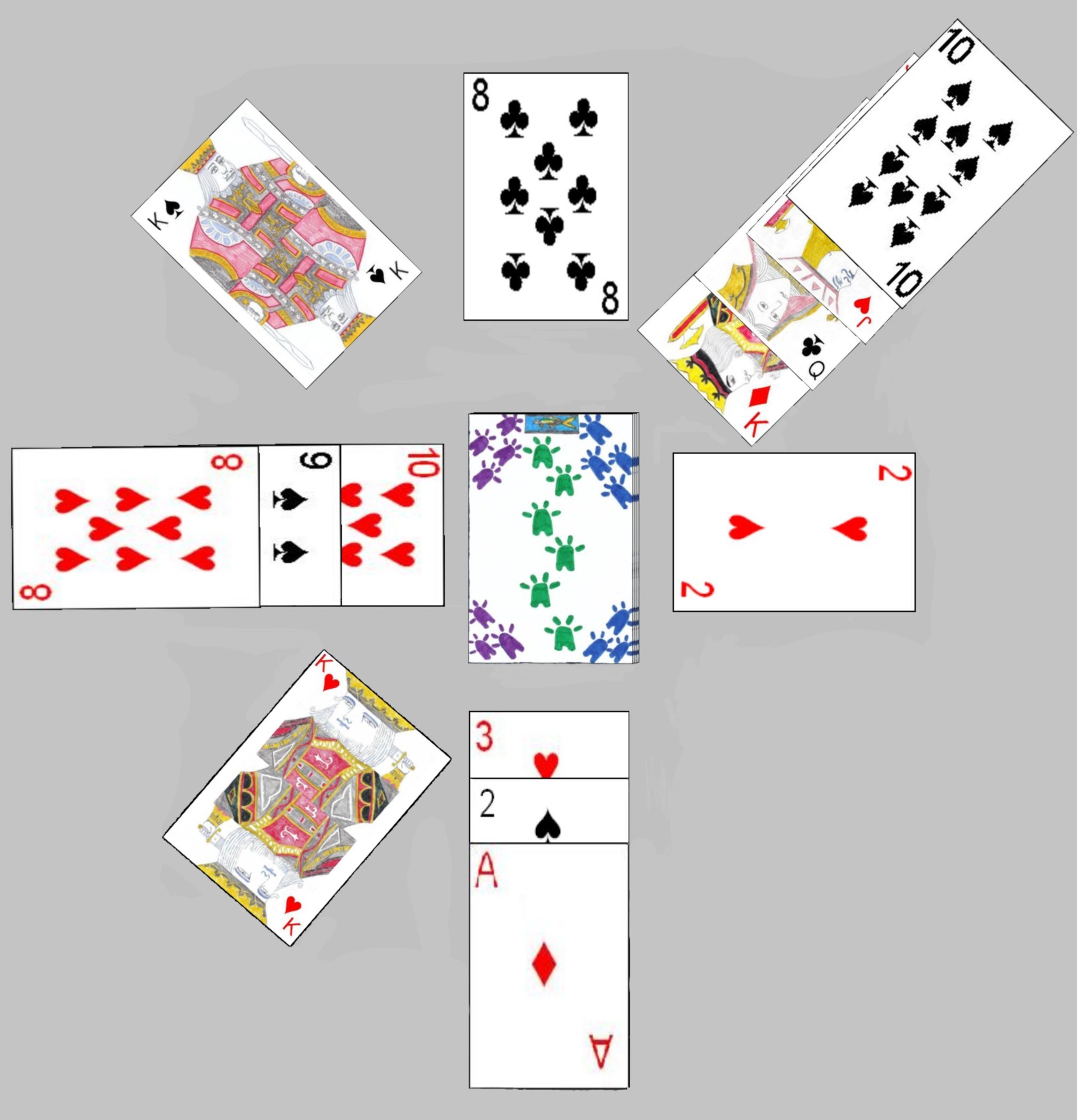 The player may continue to
make any legal plays to the tableau as long as he can. As soon as a player is unable (or chooses not) to make further plays, they call pass and the turn passes to the next clockwise player. A
player who has no moves after drawing a card can pass without making any playes to the tableau. The diagram to the right shows how the tableau might look with a game in progress.
The player may continue to
make any legal plays to the tableau as long as he can. As soon as a player is unable (or chooses not) to make further plays, they call pass and the turn passes to the next clockwise player. A
player who has no moves after drawing a card can pass without making any playes to the tableau. The diagram to the right shows how the tableau might look with a game in progress.
The first player to play their last card to the center of the table is the winner of the hand and the other players each score points based on the cards remaining in their hands as follows:
- Each King left in a players hand is worth ten points.
- All other cards left in a players hand are worth one point each.
After each hand, the deal passes to the player to the last dealers immediate left. When any player reaches some previously agreed upon limit, often 25, the game ends and the player with the
lowest score is declared the winner. If two or more players tie for the low score they are considered co-winners of the game.
Variations
Mandatory Kings: In this version of Kings in the Corner, a player having a King in his hand must play the king to one of the available corners at his first turn of play. Similarly, a player
drawing a King from the stock pile on his turn, must play the king on that turn. In this version, each hand is usually considered a complete game with the player to first get rid of the last of
their cards being the winner.
Scoring Variation: This version is played identically to the standard game. The only difference being the scoring of the cards remaining in the opponents hands when a player plays their last
card.
Aces count as 25 points, face cards (Kings, Queens and Jacks) count 10 each and the other cards count their marked value. In this version, the game usually continues until any player reaches a
score of 250 at which time the player with the lowest score is considered the winner of the game.
Drawing Order: This game is also identical to the parent game, with the sole exception being the time when a player draws a card from the stock. Here, a player does not draw at the beginning
of their turn and instead immediately begins playing to the table. Once they can no longer play cards they then draw a card from the stock ending their turn. However, if the player was able to play
all the remaining cards in their hand during the turn, they do not need to draw and are thus declared the winner of the hand, with the hand immediately being scored.
Kings Corners Solitaire: This is a version of Kings in the Corner designed for one player. To begin the player should thoroughly shuffle the cards. He
will then deal out a layout tableu very similar to that in the standard game described above. He deals five cards face up in a "plus" sign pattern (see diagram). He then lays the remainder of the
deck a bit to the side as the draw pile.
The four "corners" of the tableu are the foundation files where the player will attempt to play off the entire deck of cards into the four foundation piles, from King builing down to Ace (the
lowest card). If the player manages to get the entire deck into the four foundation piles, they have won the game. Play begins with the player taking the top card from the face down stock pile and
lay it next to the stock pile, face up.
The following are all legal moves the player can make:
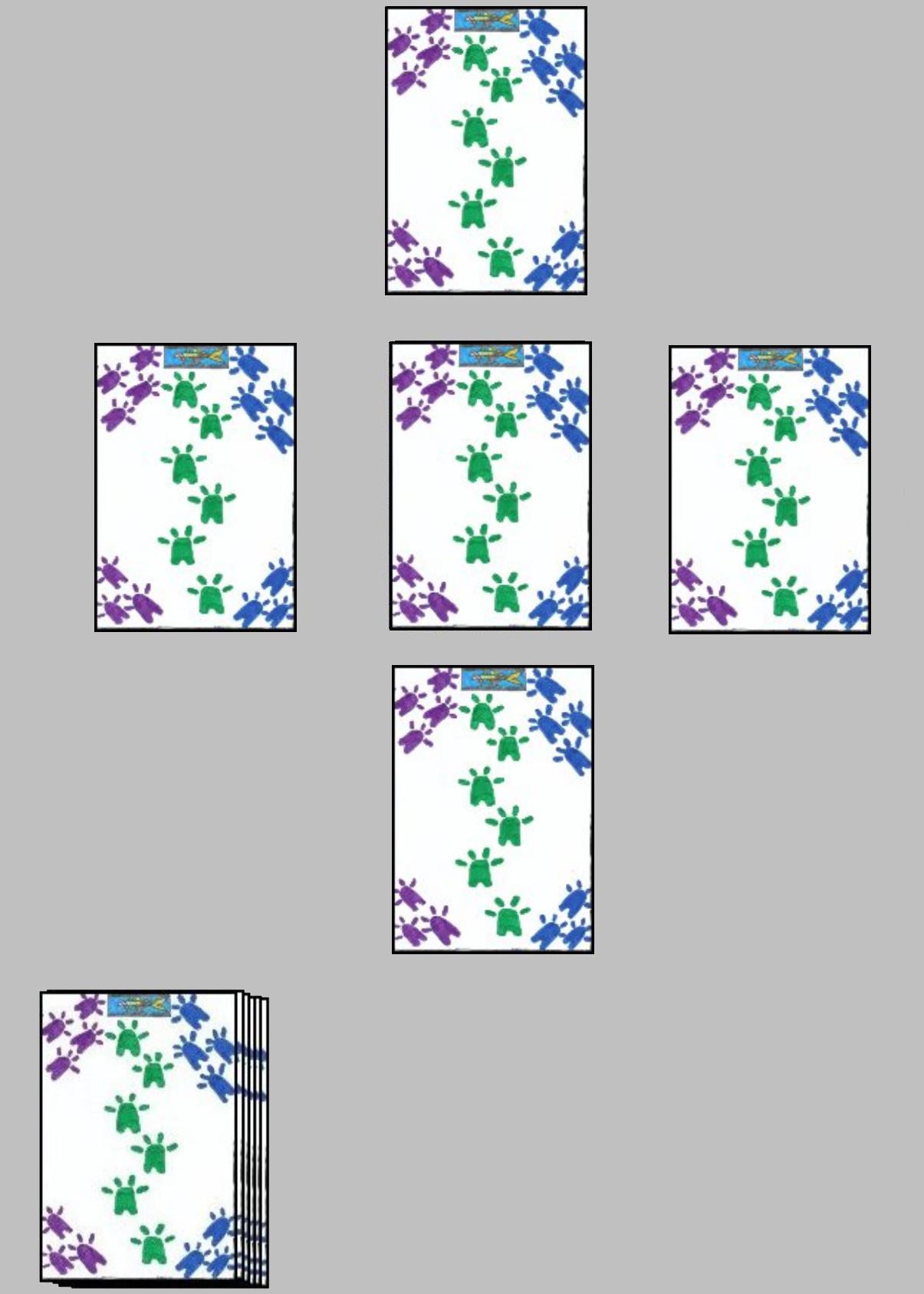 |
| Kings Corner Solitaire |
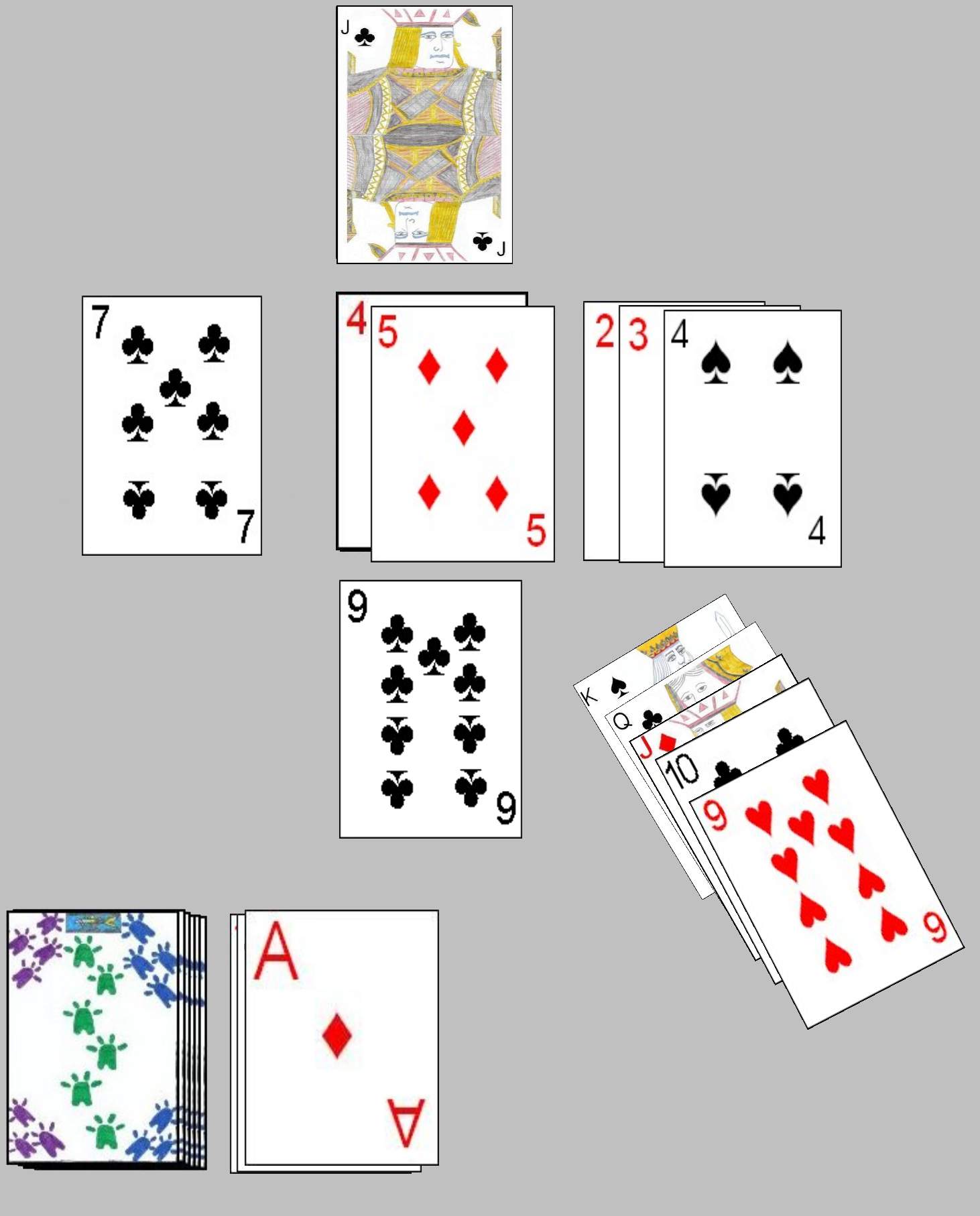 |
- The player can add a card to the foundation piles. A King can be placed to any of the four corner foundations piles immediately. Additional cards can be played to these foundation piles from
the layout or the discard pile. In order to be played to the foundation piles the card must be next lowest in descending sequence to a card already there. For example a 9 could be played on a 10
that was already in a foundation pile.
- The player can play a card to one of the cards in the "plus" layout. The player may play the top card from another of the layout piles or may play the top card from the discard pile. When
played on the five layout card piles, the card must be played in ascending order, staring with Ace and building to King (although Kings will usually immediately be played to the foundation
piles). In order to be played a card must be next in this ascending sequence of the card it is being played upon. Thus a 5 could be played on a 4 that was the current top card of one of the
layout piles. If playing a card from these layout piles leaves an empty space (last card in that pile played) the player may play any card to this empty space. This could be a card from the
discard pile or from the top of another one of the layout piles.
- The player may, if he sees no additional moves he can or wants to make, draw the next card from the draw pile and lay it on the top of the discard pile. This card can then be played as
appropriate. As playing cards from the sicard pile may expose other cards below it (from previous draws), the player may also play these as the opportunity arises.
If the player manages to legally play all of the cards onto the four foundation piles, from King to Ace he has won the game. However, if the player has depleted the stock pile and has no
additional legal plays, they have not won the game, and thus must redeal.
As a slight variation of this solitaire game, the sequencing of allowable card builds on the foundation and layout cards may be reversed. Cards played to the foundation pile are played in Ascending
order, starting at Ace and building up to King, and cards on the layout are built descending from King down to Ace.
As another variation, which makes this game much more difficult is that when building of sequences up or down the colors of the played cards must alternate. In other words a black card must be
played on a red card and a red card played on a black card.
Copyright © 2013- CatsAtCards.com. All rights reserved.
 Once the dealer is
selected, he deals the cards face down one at a time clockwise around the table until each player has seven cards. The player to the dealers immediate left receives the first card in the deal.
After each hand the deal rotates around the table in the same clockwise direction.
Once the dealer is
selected, he deals the cards face down one at a time clockwise around the table until each player has seven cards. The player to the dealers immediate left receives the first card in the deal.
After each hand the deal rotates around the table in the same clockwise direction. The player may continue to
make any legal plays to the tableau as long as he can. As soon as a player is unable (or chooses not) to make further plays, they call pass and the turn passes to the next clockwise player. A
player who has no moves after drawing a card can pass without making any playes to the tableau. The diagram to the right shows how the tableau might look with a game in progress.
The player may continue to
make any legal plays to the tableau as long as he can. As soon as a player is unable (or chooses not) to make further plays, they call pass and the turn passes to the next clockwise player. A
player who has no moves after drawing a card can pass without making any playes to the tableau. The diagram to the right shows how the tableau might look with a game in progress.
